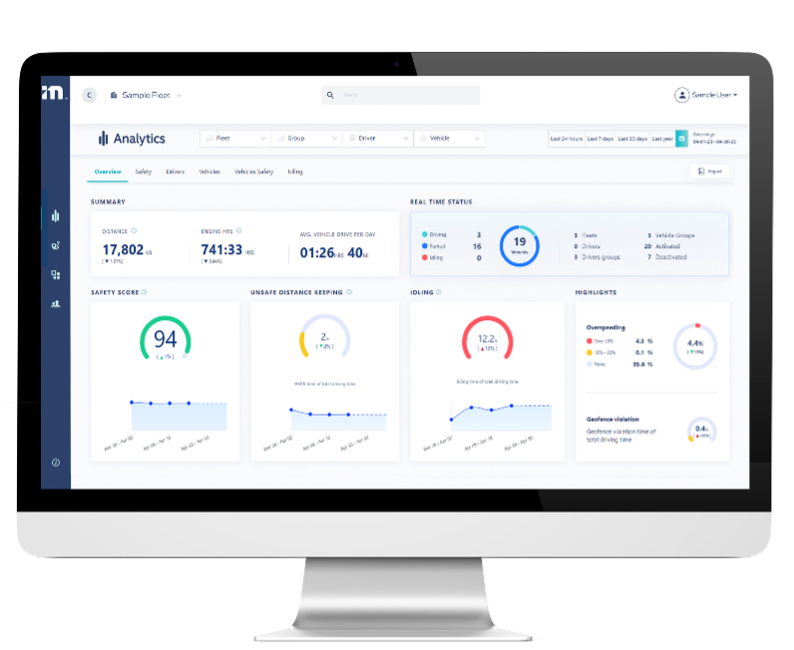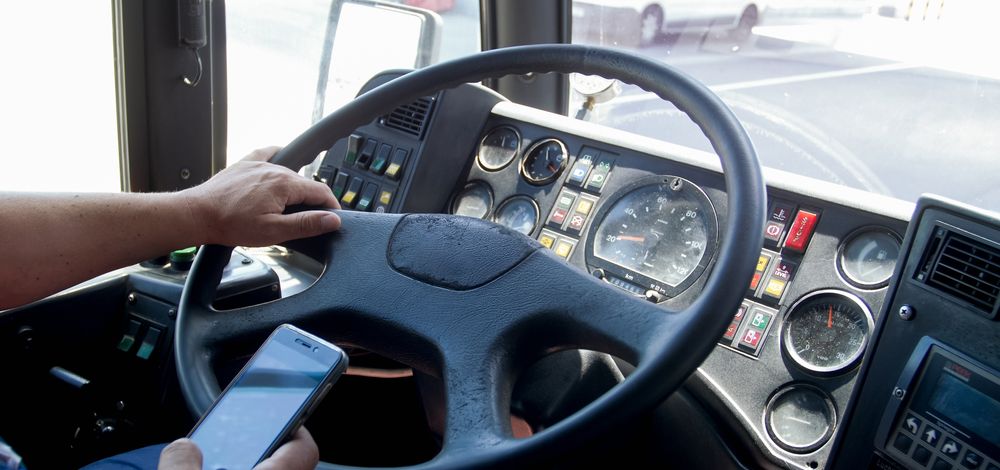
Many fleet managers tout safety as the top of their list of priorities. But how is “safety” measured? Ensuring that there are measurable, enforceable policies in place is essential to prioritizing fleet safety. While a lot of fleet management technology is dedicated to improving efficiency, meeting deadlines, and cutting costs, safety might be seen as a less measurable goal. How can you ensure you’re making progress in the right direction by implementing an actionable, measurable safety policy? Determining the best key performance indicators (KPIs) can help achieve your goals of not just operational success but also the well-being of drivers, vehicles, and the public.
Commonly Used Fleet KPIs
Key performance indicators should serve as navigational tools, steering fleet managers toward informed decision-making. As metrics, key performance indicators reflect how well a business is achieving its objectives in a certain area, whether financially, culturally, or otherwise. It is important not only to set appropriate KPIs, but to effectively communicate them to your team so they can strive to meet them.
KPIs vary by industry and business area. For example, financial KPIs include profit margins and inventory turnover, while marketing KPIs may refer to website traffic and click-through rates. For fleets, the most common targets are usually related to improving efficiency and productivity while reducing costs, while specific metrics may vary depending on industry, such as delivery or trucking. Common KPIs include:
Vehicle Uptime and Downtime
While uptime refers to the availability of a vehicle, downtime is when the vehicle is unavailable, usually due to routine maintenance or the aftermath of a collision. The costs of vehicle downtime can include the maintenance or repairs necessary to get it back on the road, as well as driver wages and lost profits. Avoiding unexpected downtime by maximizing routine maintenance across your fleet is one way to keep costs lower.
Fuel Consumption
The cost of fuel is a huge expense for all fleets. Optimizing efficiency to reduce consumption as much as possible can save valuable dollars for fleet managers. Ensuring drivers are employing better driving practices by avoiding aggressive driving and speeding is one way to minimize excess consumption.
Compliance and Inspection
Operating a fleet of vehicles means having to meet certain rules and regulations set by different agencies. In the United States, these include the Department of Transportation (DOT), the Federal Motor Carrier Safety Administration (FMCSA), and the Commercial Vehicle Safety Alliance (CVSA), who regulate and enforce safety policies for fleets of any size. Meeting regulations involves regular inspections and monitoring of things like hours of service, collisions, and other violations.
Understanding the Relevance of Safety KPIs
Safety can be a difficult concept to measure, especially within different industries. Because safety is often seen as a general cultural idea, it can be a good idea to have a set of pre-defined standards or policies that make achieving a safer fleet and workplace clearer and more attainable. Outlining these can also help to identify measurable safety KPIs. Here are some helpful fleet safety KPIs:
Collision Rates
Collisions are a risk for all companies employing fleets. On top of the safety risk to drivers and other road users, collisions can incur an array of expenses. Tracking the frequency and severity of collisions within a fleet can help to illuminate structural and training gaps to address to improve safety. Reporting collisions is often required to maintain compliance with fleet regulations.
Near-Miss Incidents
While collisions are a simpler KPI to measure, being able to track “near-miss” incidents, or occurrences that narrowly avoid accidents or other moving violations, can be extremely valuable in shedding light on overall fleet safety.
Driver Behavior
Placing quantifiable metrics around driver behavior is a great tool for performance evaluation and targeted training. KPIs may include indicators of aggressive driving like harsh braking, close following, and speeding.
Identifying and Enforcing Safety KPIs with Telematics
Telematics systems like the Mobileye Connect Platform provide an invaluable resource for measuring safety KPIs giving fleet managers access to a wealth of data, including alerts triggered by potential collision scenarios. This data serves as a real-time insight into the safety performance of the fleet.
The Mobileye Connect Platform empowers managers by offering a comprehensive view of driver behavior, allowing for immediate intervention and tailored training programs to address safety concerns.

The system leverages the real-time AI alerts that drivers receive from the Mobileye collision avoidance system. By capturing this data, fleet managers can identify trends and patterns that may indicate risky driving behaviors, allowing them to take proactive steps to mitigate potential risks in the future. This not only reduces the risk of collisions but also helps ensure the safety of drivers and other road users.
Including safety as a primary KPI isn't just a matter of checking off boxes; it's about safeguarding lives and assets. Prioritizing safety within KPIs fosters a culture of responsibility and care, leading to lower risks, costs, and a safer workplace culture.





